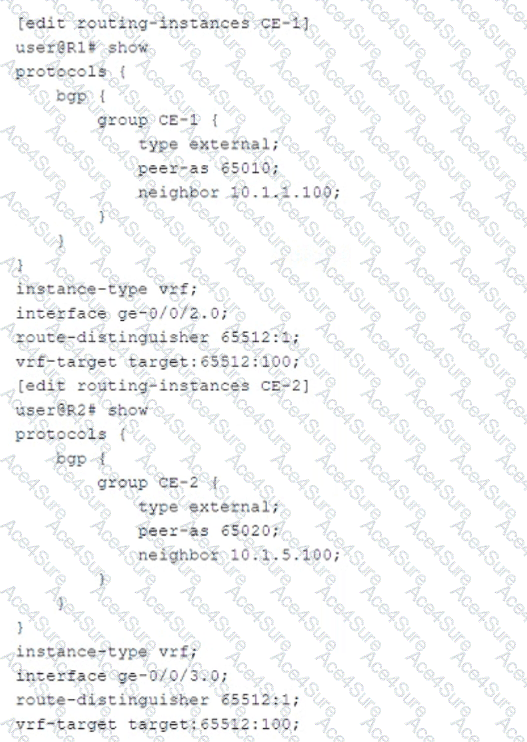In the exhibit, we see two VRF (Virtual Routing and Forwarding) instances, CE-1 and CE-2, configured on a Juniper router. Each VRF is associated with a route-distinguisher (RD) and a vrf-target value.
Understanding the Role of vrf-target
The vrf-target is used to define Route Targets (RT), which control the import and export of VPN routes in MPLS Layer 3 VPNs (L3VPNs).
If two VRFs share the same RT, they will import each other's routes, allowing communication between them.
In this case, both VRFs have the same vrf-target:
vrf-target target:65512:100;
Understanding route-distinguisher (RD)
The RD (Route Distinguisher) only ensures uniqueness of overlapping IP prefixes within the MPLS network.
It does not control route sharing between VRFs.
In the exhibit, both VRFs have the same RD (65512:1), but this does not influence whether they share routes.
Correct Answer Selection
A (Correct): The vrf-target configuration enables route sharing between CE-1 and CE-2 since they have the same RT (65512:100).
B (Incorrect): The vrf-target does the opposite—it allows sharing, not blocking.
C (Incorrect): The route-distinguisher only provides unique route identification, but does not affect route sharing.
D (Incorrect): Again, route-distinguisher has no impact on route sharing.
Reference from Juniper Official Documentation
✅ Juniper Documentation - Junos MPLS VPNs Configuration Guide:
"Route targets (vrf-target) are used to control the import and export of VPN routes between different VRFs. VRFs with the same route target can import and export routes to each other, enabling inter-VRF communication."
Thus, the correct answer is:
✅ A. The vrf-target configuration will allow routes to be shared between CE-1 and CE-2.

